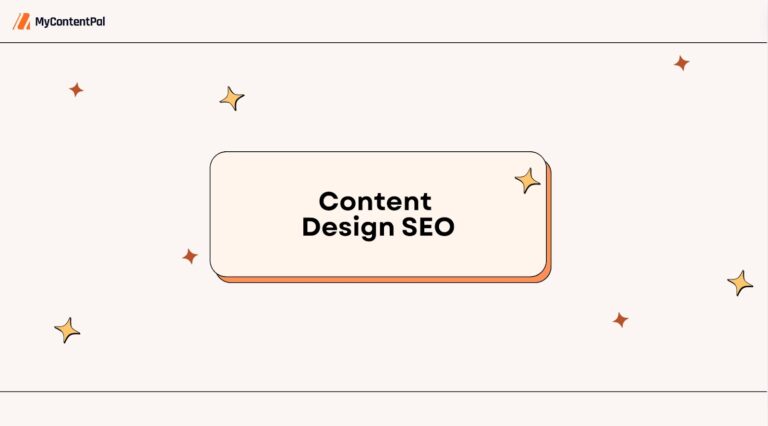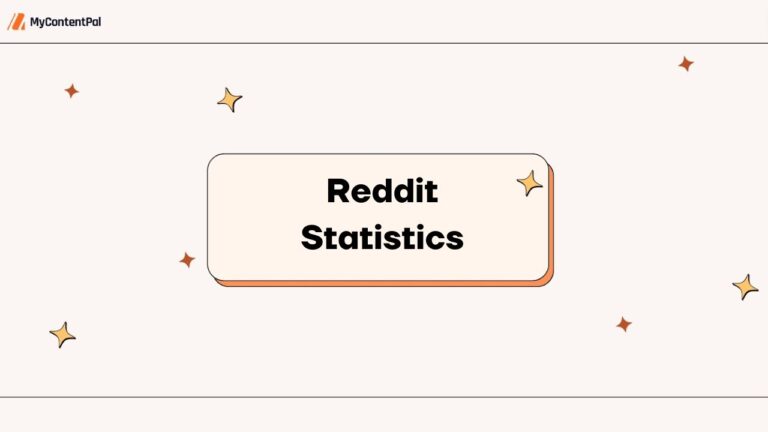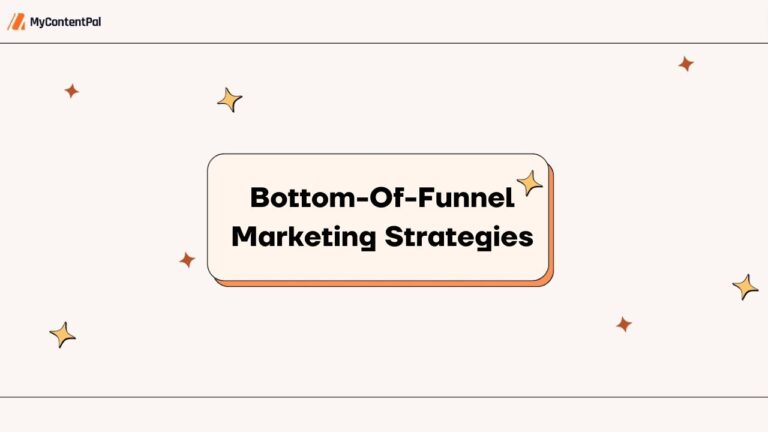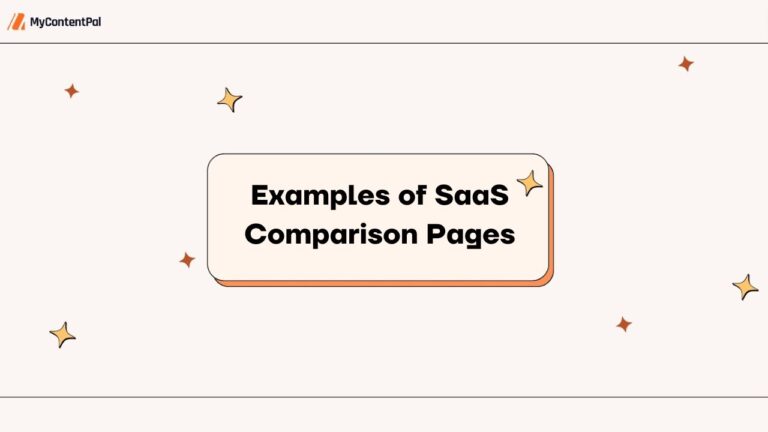Getting your marketing right can be enough to make even the most seasoned of professionals scratch their heads. This is often the case when it’s top-of-funnel marketing. Top-of-the-funnel marketing strategies are crucial, especially in sectors like Software as a service (SaaS), digital education, and real estate, where attracting a wide audience off the bat can define your success.
New to this domain and wondering what top-of-funnel marketing is? Well, it’s the marketing activities and campaigns that target consumers in the top portion of the marketing funnel. Pretty much that initial awareness stage of the customer journey when it’s time to reel your customers in further because you’re providing problem-solving content. The whole purpose of this content is to edge prospects closer to conversion.
So, let’s take a look at the best top-of-funnel marketing tactics and what they could mean for your business.
The best tactics in 2024 are:
- SEO
- Social media posts
- Native recommendations
- Referral campaigns
- Online tools
- Infographics
- White papers
- Webinars
The 8 Best Top of Funnel Marketing Tactics
SEO
The SEO landscape has changed so much in the last two years. Google’s continuous updates and the recent introduction of Search Generative Experience (SGE) are examples of this.
The response to SGE has been an interesting one but regardless of how some feel, the fact remains that traditional TOFU search queries are being threatened, so it’s sink or swim. Your strategies have to adapt. I’d focus on two things:
- Persona-led content marketing: Crafting content that speaks directly to the needs and pain points of users.
- Creating non-linear funnels: B2B buyers don’t follow a linear path to purchase. They get information from a few sources, revisit pages, and take their time.
Keep this in mind when developing your SEO TOFU content strategy. Then, once you’ve developed the actual content and organic traffic increases, your focus should shift towards continuous engagement and nurturing. Provide value and personalised interactions until they’re ready to convert. This is where using internal links to relevant articles comes into play and deciding on which keywords present the most opportunity, especially with SGE’s content delivery. There are loads of keywords that are easy to rank for but SGE is threatening this.
Here’s how I see it: Look at the output of SGE, then ask yourself whether you find it useful or not (in the context of your niche). If you don’t, then create an article for it and relevant internal links to it.
Let’s take a digital education company specialising in advanced online courses. If their target keyword is ‘best data science practices” and the SGE output lacks depth, has outdated information, or is missing credible sources, then that’s your cue to value-adding content.
Benefits
Implementation
SEO can be tackled in a number of ways, so it may be best to outsource it if you can’t do it in-house. But, if you want to take a stab at it, focus on:
Keep in mind that there’s no point in creating TOFU content if you can’t capture the emails of users and drive them further down the funnel. So, whatever the page you’re creating, ensure it has some way to do this, like a lead magnet.
For a deeper understanding, check out my post on what is a lead magnet funnel and how it works to effectively guide users through your sales process.
Challenges & solutions
SGE
AI is preventing clicks on potentially high-traffic keywords. To address this, keep on top of Google’s continuous updates and analyze SGE outputs to see what they’re lacking. Adapt your TOFU content accordingly.
Black hat SEO
These are SEO techniques that go against search engine guidelines. Don’t use them. They may work for a short time but the ramifications far outweigh the benefits. Only use white hat techniques.
Content quality
Don’t regurgitate information that you see in other sources. Create fresh content that offers reliable information but with new perspectives. Do this by analysing your competition and the top-ranking pages on the SERP for your target keyword to see what you can improve upon.
Also, make sure you’re getting info from primary sources, not your secondary ones like competitors.
Examples
TOFU keyword modifiers are what you need to attract users and move them further down the funnel. But remember that the modifier you use has to be strategic, in the sense of it aligning with user objectives and facilitating redirection to the next step. Some of the most powerful modifiers include: How to, What is, and Free.
I say they’re the best because of the emotional response they evoke – perfect for encouraging movement down the funnel. Sticking with digital education, you could then use these keyword modifiers like so:
Social media posts
With SGE threatening to pull traffic away from your target keywords, there’s a growing need to find ways around it. One of the best mechanisms to do so is social media. Why? Because everyone can’t get off it nowadays. Use that to your advantage by creating TOFU and even BOFU content.
In this case, your TOFU content strategy needs to be tailored towards driving people to your target landing pages or a desired action such as downloading an app or subscribing to a newsletter (for that email capture).
For example, you could have an educational LinkedIn carousel post with each slide having steps on how to do something (that addresses a pain point) and the final slide having a CTA like “Learn more.” Learn is another powerful keyword modifier.
Benefits
Implementation
1. Define who your target audience is and see which type of media they respond to the most. Then craft the actual content, and make sure it’s engaging and not too labour-intensive to create, especially if you have a small team.
2. Use a diverse range of media like carousels, shorts, polls, and live streams, but be sure to keep the presentation of your content as uniform as possible. You should also take into consideration which type of content is easiest for your business to create and deliver on a regular basis.
3. Post at the right time to maximize reach and engagement, then monitor your posts to see what works. You can do this by analyzing the behaviour patterns and demographics of your visitors. Luckily, there are a bunch of third-party tools that can help you do this, like Google Analytics and Sprout Social.
But my recommendation would be to start off with free tools or at least the free versions. This is particularly wise if your budget is already stretched thin, plus the idea should always be for your social content to have the best possible return on investment (ROI). A good ROI is generally between 3:1 and 5:1.
Another obvious method is experimenting and running various tests. You may already know this so what I can tell you is that the key here is choosing the right testing method. Here’s how I’d look at it for a few major sectors:
Challenges & solutions
Content overload
Don’t post too frequently. Get a nice rhythm that aligns with your audience’s activity.
Algorithm changes
Keep up with algorithm changes to ensure that your posts are actually seen. Social media management tools can help in this regard.
Examples
Love it or hate it, one of the most effective social media content forms is short-form (doesn’t mean that it’ll work for your niche). Companies using short-form content are here to stay:
Amazon Prime’s ‘Prime Day’ campaign is a great example of short-form video marketing. They used short-form videos to promote products and drive direct responses to offers, which involved using analytics to track engagement and conversions.
If we look at it from a business coaching perspective, Daniel Priestly, a well-known entrepreneur, is a good reference point for anyone looking to do something similar. He also uses punchy short-form videos to deliver immense value and build trust with his audience.
My last example is Soy Yo Candle. They do a very important thing with their content, addressing the common struggle of candle ownership (making them last) and offering a solution. Their levels of engagement show just how effective educational content can be.
Native recommendations
Native ads are adverts worked into the design of a web page, so that they blend seamlessly. Did you know that native ads are viewed 53% more than regular display ads? Plus, they can generate an 18% uplift in purchase intent! That goes to show just how powerful they are as a tactic.
Utilising them effectively means partnering with popular websites and platforms to deliver targeted, relevant content recommendations to users. The key to native ads is ensuring that they don’t actually look like ads. They need to blend fairly seamlessly with the platform they’re on.
So, if you’re trying to promote a real estate app, for example, you might want to think outside the box a little. Think about it this way: A reputable financial website like Investopedia might attract users interested in investments such as real estate – the ideal opportunity to sneak your app in.
Alternatively, you could take a more obvious route by advertising it on a platform like Apartment Therapy – a website that offers home decor and lifestyle tips. See what I’m getting at here?
Benefits
Implementation
Create high-quality, relevant content that aligns with the choice platform’s audience, delivering it through native ad units. You can also use data and analytics to optimize content recommendations.
Challenges & solutions
Content quality
Native recommendations thrive off quality. Focus on creating engaging content that resonates with the audience.
Ad placement
Proper ad placement is a must here, so partner with platforms that give you nice placement options.
User experience
Native recommendations shouldn’t disrupt the user experience. Make sure they blend seamlessly with the platform.
Examples
One example that I love when it comes to native advertising is how Land Rover created a mini-action movie of sorts called the Dragon Challenge to promote the new Range Rover at the time. Because of the production quality and suspenseful nature of the video, it featured quite frequently on multiple related websites and social media pages.
Referral campaigns
With referral campaigns, you’re pretty much relying on word-of-mouth marketing, which is incredibly useful. It involves convincing existing customers to refer potential buyers to your brand. This approach encourages those who’ve had a smooth customer journey to kind of be brand ambassadors, directing the target audience towards your sales funnel through what’s considered organic marketing.
Benefits
Implementation
1. Start off by establishing an inventive restructure, make sure it’s simple yet enticing, rewarding both the referrer and referee.
2. Then promote the program through email, social media, and your website. In this case, search engine marketing (SEM) may be a good way of getting around your campaign being smothered by SGE results.
3. After that, analyze metrics like participation and conversion rates to gauge effectiveness. Depending on what your results are, you may have to reconsider things like the keyword modifiers used as well as the platforms that you’re using to advertise the campaign. Ask yourself: Does this platform make sense for my niche and target customers?
Challenges & solutions
Low participation
Solve this by making the referral process straightforward and the rewards appealing.
Limited reach
Promote it through multiple channels and make sure that the channels you pick make sense for your niche.
Examples
One referral campaign that most of us are aware of is the one from Uber. The program offers free rides to both the referrer and the referred, which has been very useful in terms of helping the company reach a market cap of around 130 billion dollars.
Their advertising of this campaign was relatively straightforward in the sense that ‘free’ is a powerful keyword modifier that often easily inspires action. This is simply because users see no harm or obligations in ‘free.’
Another great example is Dropbox. They launched a referral program that awarded the referrer and referee with an additional 500MB of free storage. Again, the incentivizing word being ‘free.’ This program helped Dropbox grow from 100,00 users to 4 million in just 15 months, increasing signups by 60%.
The Dropbox referral program used affiliate marketing and SEM to get it out there. It also included a tracker that let users monitor the status of all the friends they’d referred, essentially gamifying the program in a sense, another effective approach.
Online tools
This tactic involves using a range of online tools to drive lead generation, nurture prospective customers, and drive conversions. A good example would be an online finance calculator, which, after being used, directs one to a financial management product.
The main issue I have with this being one’s primary tactic is that it TOFU tactics rely on engagement and the goal of that engagement is an action to drive a user further down the funnel. With online tools, you might have a case in which a site visitor uses your online tool and doesn’t do anything further. So, think about how you can keep them on the page.
For one, you can ensure that your tool is intuitive and visually appealing. Once that’s covered, try integrating a CTA after the tool has been used which addresses a pain point that the user may still have.
This CTA can direct them to read an article on your blog, sign up for further information, or get in touch with a consultant – opportunities to capture user information and funnel them further down.
Benefits
Implementation
After you know who your target customers are and your objectives, select/craft the right tool(s) to achieve those goals. This could be website design tools, marketing dashboard software, or a simple online calculator.
If you’re short on time or internal resources, outsourcing this to a freelancer may be the best approach. Bear in mind that the tool should be as seamless as possible. So, keeping it simple might the best approach for maintaining optimal website speed and functionality.
Challenges & solutions
Data overload
Managing large amounts of data can be taxing. So, you might want to consider using data visualisation tools to simplify data analyses.
Technical issues
Technical issues can ruin the effectiveness of online tools, make your brand look unreliable, and increase your bounce rate. Make sure your tool has been properly tested before it goes live.
Budget constraints
Online tools can be costly. Prioritise tools based on ROI and budget limitations.
Examples
Check out the mortgage calculator on Money Helper. It’s a classic example of an online tool that addresses a major pain point. My one criticism of it though is that I feel it could do more in terms of inspiring the user’s next action.
But, they do have recommended readings and a CTA banner on the side for users to get in touch with them. I’d have a popup message after the final calculation asking users if they’re “Still confused?” or something along those lines to resonate with them and inspire action.
Infographics
People are reading less and less these days, which is why I like to keep things as concise as possible. You know a great way to do this? Infographics. They’re a visually engaging way to present information, making it easier for your audience to understand complex data and concepts.
An issue that a lot of companies face – especially those in technical sectors – is the space limitations of infographics. But trust me, this is a good thing because people don’t want to read a whole bunch of text. Select the most impactful keywords and pair them with visually appealing graphics.
You’ll also have to make your CTA quite evident with infographics in order to inspire action.
Another issue with infographics that you’ll have to be aware of is how they can be difficult to integrate with other channels. They’re usually standalone pieces of content, so keep this in mind.
Benefits
Implementation
Start off by using free and intuitive platforms like Canva to create infographics. Your infographics could be data-driven, about processes, or informational. Just remember to keep it simple and consistent – standardised colour palette, icon style, and typography.
When deciding on the titles and subtitles, go for emotive keywords that directly address the viewer’s pain points.
Challenges & solutions
Design
Although not a must, an artistic eye can help here. So, you could either outsource this or just opt for simple designs, as less is usually more.
Distribution
Find the platform that most of your prospects use. When distributing the content make sure the aspect ratio is right for the particular platform.
Examples
Take a look at this great example from eLearning Infographics…
White papers
White papers are reports that break down complex issues concisely and present an opinion on the matter. They help people understand issues and formulate solutions. Truth be told, white papers can be a bit dated because of the way content has evolved. But, this depends on your industry and niche.
My recommendation here would be to keep your white paper as informative as possible without it going on for too long, as long-form content often lacks shareability. You also have to ensure that you update it regularly, as the information in white papers can quickly become outdated.
This may be particularly true for sectors like digital education where learning materials and modes can switch up quite fast.
Do your best to balance value and promotion, use visuals, include actionable CTAs, and repurpose the content into other formats like blog posts, social media updates, or email newsletters.
One thing I would do is use a lead magnet to encourage users to provide their contact information in exchange for the white paper, after only giving them a juicy snippet of it.
Benefits
Implementation
Identify a topic that’s relevant to your product or service, then do extensive research on it. You then have to write the white paper, present it in an attractive style (including relevant images and graphs) and promote it through various channels.
Nowadays, you can even take things up a notch by publishing an interactive marketing white paper. It makes the content a lot more engaging while making you look like you’re ahead of everyone else and their boring PDFs.
If you want to go the interactive route, try out Storydoc, it’s pretty intuitive and is AI-powered to make the process a lot easier.
Challenges & solutions
Generating leads
If you don’t promote white papers, you might not get leads. Use different channels and strategies to promote them.
Maintaining interest
Attention spans are getting shorter and because white papers can be a bit formal, it becomes even harder to keep readers interested. The solution is to keep it short and punchy while ensuring each sentence adds value and a fresh perspective.
Examples
Let’s take Microsoft for example. They publish white papers on loads of topics related to technology and innovation, reaffirming their position as a thought leader.
But, to get the white paper you have to give them some information about yourself such as your name, contact details, company, and job title – all key information that they then leverage for product development and funnelling.
Webinars
Webinars allow businesses to deliver live interactive presentations to a remote audience. They can be used for educational purposes, like training sessions, product demonstrations, and industry-related seminars.
If you want to host a webinar it’s important not to make it too focused on selling a product or service, that’ll just lead to a lack of engagement. Also, try and partner up with other thought leaders, who are either already established or on the verge but with a good following. This can help build trust with the audience and generate buzz.
And don’t make it too long, attention spans are getting shorter (Google it), so don’t go on for hours on end. Switch things up by including interactive elements where possible.
Benefits
Implementation
Choose an interesting topic that relates to your audience (their needs; not necessarily your brand). Promote the webinar well before it actually happens, maybe even months. During the webinar engage the audience and use interactive features like polls and Q&A sessions to prevent tired CEOs from falling asleep.
Challenges & solutions
Technical issues
Poor audio or video quality can be a killer here, ruining the webinar experience. Use high-quality equipment and make sure your connection is stable.
Follow up
Following up with participants is something many forget. My suggestion is to use marketing automation tools to send personalised follow-ups.
Examples
Remember when Intel and GE Healthcare teamed up to aid assisted care living communities? Well, they used a webinar to engage with their audience, giving breakdowns of the tech they were using and engaging with leads.
Three important things that they did with this webinar are making it available to watch afterwards and creating both a one-page summary and a transcript. This helps people revisit it and find information that they find particularly useful, pretty much keeping them engaged and increasing the chances of them moving further down the funnel.
Choosing the Top of Funnel Marketing Tactic for You
Image by Antonio Feregrino on Unsplash
So, I’ve given you a bunch of options. Now, all that’s left is choosing the one that works best for you:
Target audience
Clearly define your target audience and make sure your strategy aligns with them. For example, if you’re targeting real estate investors, focus on tactics that drive traffic to your website and generate leads.
Marketing goals
Think about your marketing goals, then choose tactics that align with those goals. If your goal is to increase brand visibility, focus on tactics that drive engagement and reach.
Budget
Consider your budget, if it’s tight don’t level your funds, go for cost-effective tactics. Social media marketing, for example, can be an affordable option. Paid advertising on the other hand may need a larger budget.
Resources
The next point of consideration is whether you actually have the resources to pull off your strategy. For example, if you have a small team, go for tactics that don’t need a whole lot of hands on deck.
Competition
Size up your competition and choose tactics that differentiate you from others. So, if your competitors are using paid advertising, consider using content marketing instead to stand out.
Measuring Success in Top-of-Funnel Marketing
So, you’ve picked a top-of-funnel marketing tactic but how do you know if it’s working? It’s simple, all you need to know is which metrics to look out for. Here are the ones to keep an eye out for:
Key metrics
Examples of Top of Funnel Marketing
Here are three examples of how some big companies have used top-of-funnel marketing:
HubSpot’s Content Marketing Funnel
HubSpot is really good at creating informative blog posts and engaging social media content. The content excels because it addresses common pain points and challenges faced by potential customers. This content helps build awareness and trust with their audience.
HubSpot then offers free educational resources, like e-books and guides, in exchange for email addresses. This nurtures relationships and moves prospects further down the funnel. They also offer free trials and demos of their software to encourage purchase decisions.
CrazyEgg’s Awareness and Interest Stages
Then there’s CrazyEgg, a SaaS company providing heatmap tools. They use paid traffic and blog content to build brand awareness. Another thing they do is optimise for SEO to increase exposure. Once prospects are interested, they direct them to their home page, where they can enter their website URL and see a heatmap analysis of why visitors are leaving.
This leads to a pricing page where prospects can choose a plan or be nurtured through a lead nurturing autoresponder sequence.
Webflow’s Interactive Templates and Design Courses
Webflow, a website builder, offers interactive templates and design courses to get their audience interested. These resources help aspiring website creators by providing practical tools and guidance to up their skills. This helps build trust and interest in their services, ultimately driving conversions through free trials of their website builder.
FAQs
How can behavioural data be used to enhance top-of-funnel marketing strategies?
Behavioural data can be used to tailor these strategies by creating behavioural groupings and, in turn, advertising to users who exhibit similar behaviours like making multiple purchases within a certain timeframe. This approach helps you find users who are more likely to convert, which makes your ad spend more worthwhile.
What are the four levels of the marketing funnel?
The four levels of the marketing funnel are:
- Top of Funnel (TOFU): Awareness and lead generation.
- Middle of Funnel (MOFU): Conversion and nurturing.
- Bottom of Funnel (BOFU): Conversion and closing deals.
- Beyond the Funnel: Retention and customer loyalty.
How can gamification be integrated into top-of-funnel marketing efforts?
You can do this by creating engaging content and interactive experiences that encourage users to participate and share their experiences. Think contests, quizzes, and rewards for completing desired actions. For example, social media campaigns that offer users rewards for sharing a specific post or following an account. Just be wary of potentially violating community guidelines.
What is the SaaS Marketing Funnel?
This is a specific type of marketing funnel used by SaaS companies. It usually includes the following stages:
- Awareness: Building brand awareness and generating interest.
- Interest: Educating potential customers about the product and its benefits.
- Desire: Creating a desire for the product and highlighting its unique features.
- Action: Encouraging users to sign up for a free trial or purchase the product.
- Retention: Retaining customers through ongoing support and updates.
Final Thoughts
Remember just because everyone is doing something doesn’t mean that you should too. Think about your industry, value proposition, and anything else that makes your company unique before settling on a top-of-funnel marketing strategy. Trust me, if you focus on what sets you apart, you can effectively utilize top-of-the-funnel tactics to attract and keep customers.
Also, don’t forget to explore other marketing channels to broaden your reach and enhance your digital marketing efforts. Best of luck out there!





